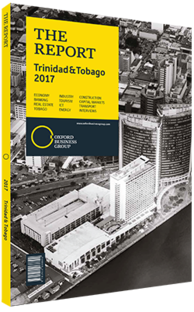New legislation in Trinidad and Tobago expected to provide a clearer picture of capital market trends
With a small and thinly traded capital markets segment, Trinidad and Tobago has traditionally faced challenges regarding the transparency and risk analysis of its over-the-counter (OTC) fixed-income products. However, in recent years the T&T Securities and Exchange Commission (TTSEC) has introduced a number of measures designed to boost investor confidence in these products and provide clarity in the trading process.
Global Standard
Much of the impetus for reform stems from the TTSEC’s 2013 signing of a multilateral memorandum of understanding (MMoU) concerning consultation, cooperation and the exchange of information with the International Organisation of Securities Commission (IOSCO). As a signatory, T&T can expect an enhanced international reputation for its capital markets and increased investor confidence, but it also obliges the TTSEC to make positive progress towards fulfilling a number of articles relating to industry oversight. In August 2016 the IOSCO published its second assessment of T&T’s implementation of the organisation’s principles of securities regulation. IOSCO’s report acknowledged that the TTSEC appears to act independently of the government, and praised legislation introduced in 2012 that strengthened the commission’s enforcement and inspection powers.
Repo Market
Repurchase agreements on government debt are sold to buyers who hold them until maturity, with typical buy-back times ranging from six to 12 months. Prior to 2012 the repo market was virtually unregulated, exposing repo buyers to significant counterparty risk. However, in that year the TTSEC introduced a number of new measures to regulate the market. Under the 2012 rules, repo transactions involving non-institutional investors have to be lodged with the T&T Central Depository, a branch of the T&T Stock Exchange, and margins were charged on all transactions, providing a buffer for market fluctuations. “There is a recognition that having a third-party custodian protects the integrity of the business,” Ramcharan Kalicharan, managing director of local brokerage firm KSBM Asset Management, told OBG. “The dealers either absorb the fee themselves or pass it on to the client.”
On Report
Under the IOSCO MMoU, TTSEC is also given responsibility for “assessing, measuring and evaluating risk exposure in the securities industry”, and the IOSCO’s report noted that the TTSEC still needed to develop the process for monitoring and mitigating systemic risks. The TTSEC’s response has been to step up reporting requirements for OTC products. Under the April 2016 Micro/Macro Prudential Reporting Framework all market participants are required to report each transaction to the TTSEC on a monthly basis.
Brokers began reporting their deals in September 2016, but some participants believe the regulations may need to be fine-tuned over time. “There is a fine balance between providing increased transparency to the market and introducing onerous reporting requirements,” Sarodh Ramkhelawan, manager of investments at Bourse Securities, told OBG. “The new regulations take a banking framework and impose it over the broker environment, but while banks have compliance departments, it is more difficult for smaller broker-dealers.”
Rate My Bond
The implementation of future legislation may also increase the role of credit ratings agencies and help provide improved risk analysis. Delayed since 2015, the Insurance Bill requires all bonds in an insurer’s portfolio to have a rating, or else the insurer must set aside a 100% capital allocation. The central bank is also due to implement Basel II and Basel III regulations, which will require banks to have elements of their portfolios rated for capital adequacy purposes. The first TTSEC data on the size and trends in the repo market is due in mid-2017. Broker-dealers may feel the pinch of tougher reporting requirements, but the information gleamed from the data will give a clearer picture of this important asset class. Combined with the increased ratings coverage for corporate bonds, fixed-income investors can look forward to more transparency.
You have reached the limit of premium articles you can view for free.
Choose from the options below to purchase print or digital editions of our Reports. You can also purchase a website subscription giving you unlimited access to all of our Reports online for 12 months.
If you have already purchased this Report or have a website subscription, please login to continue.

